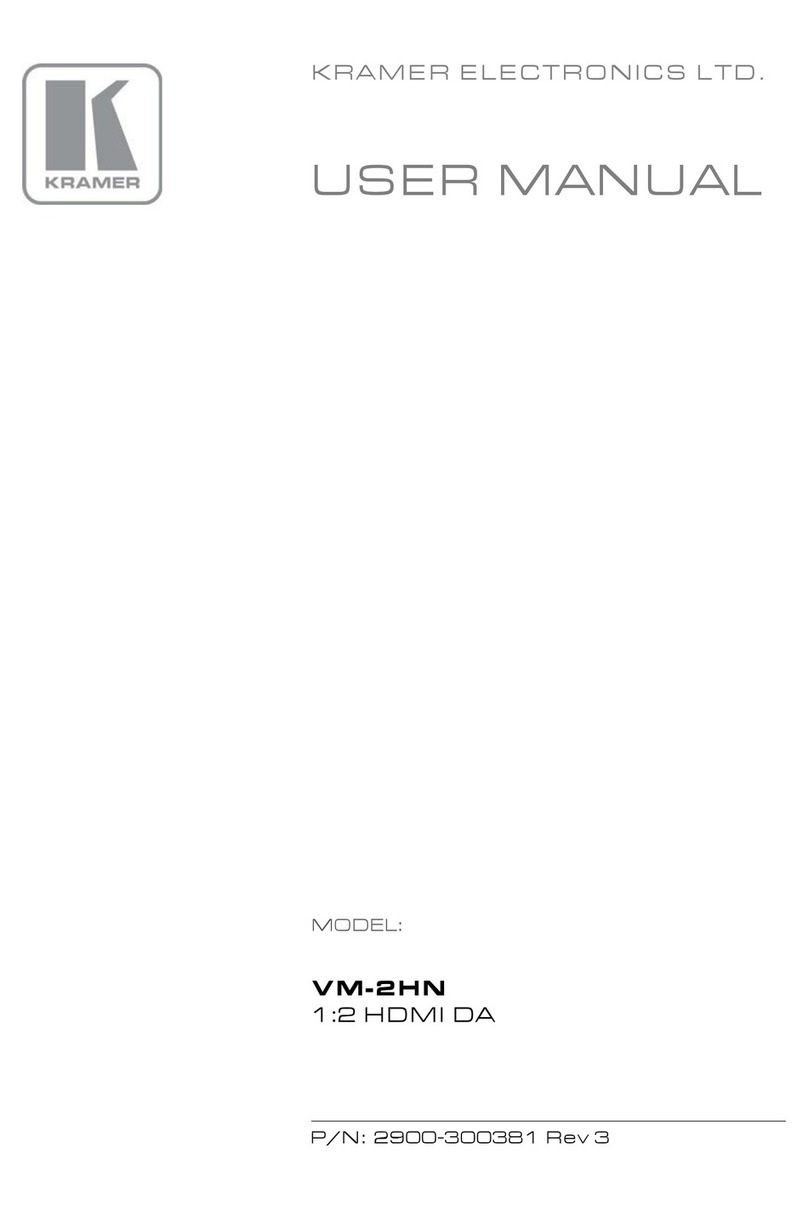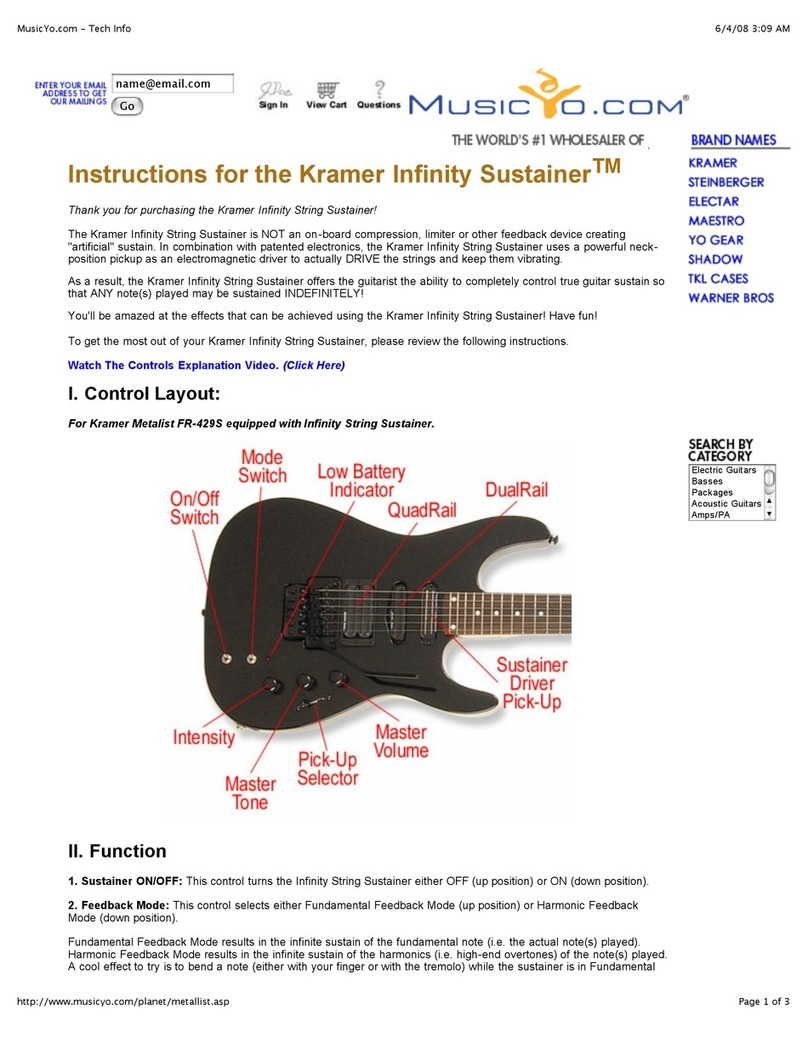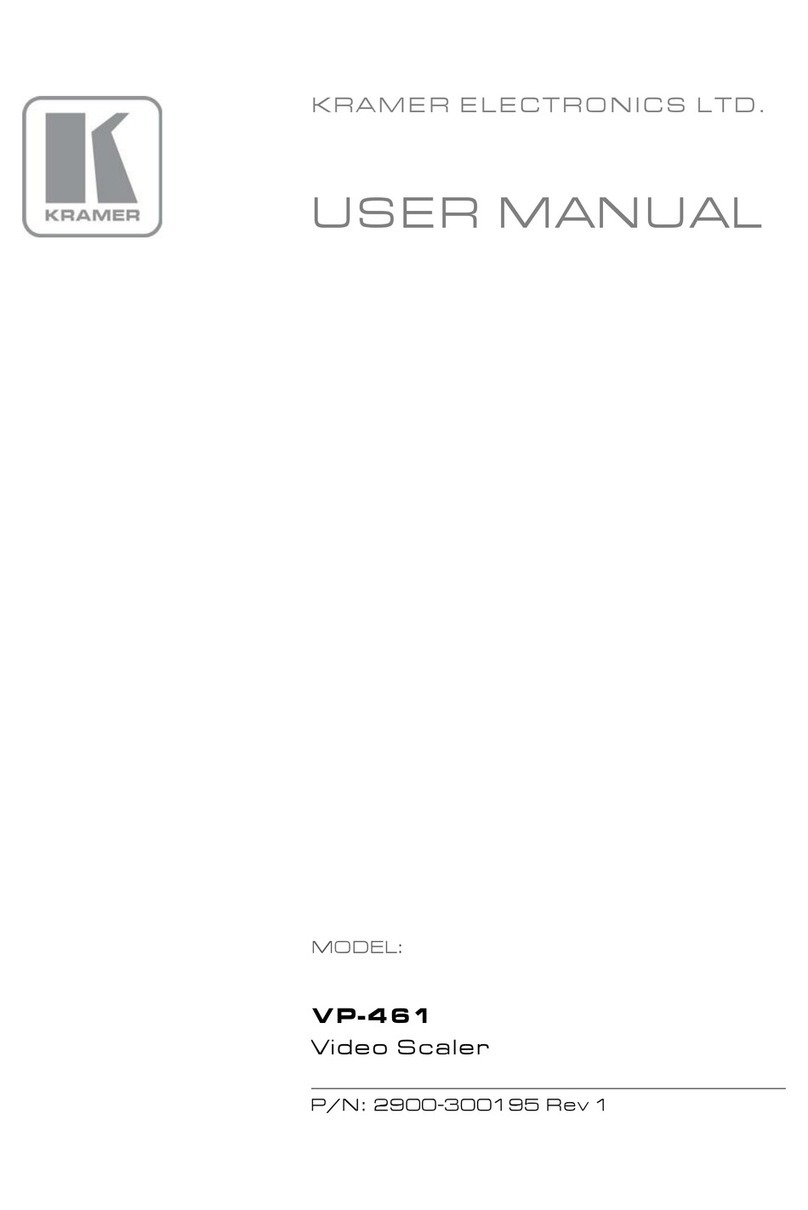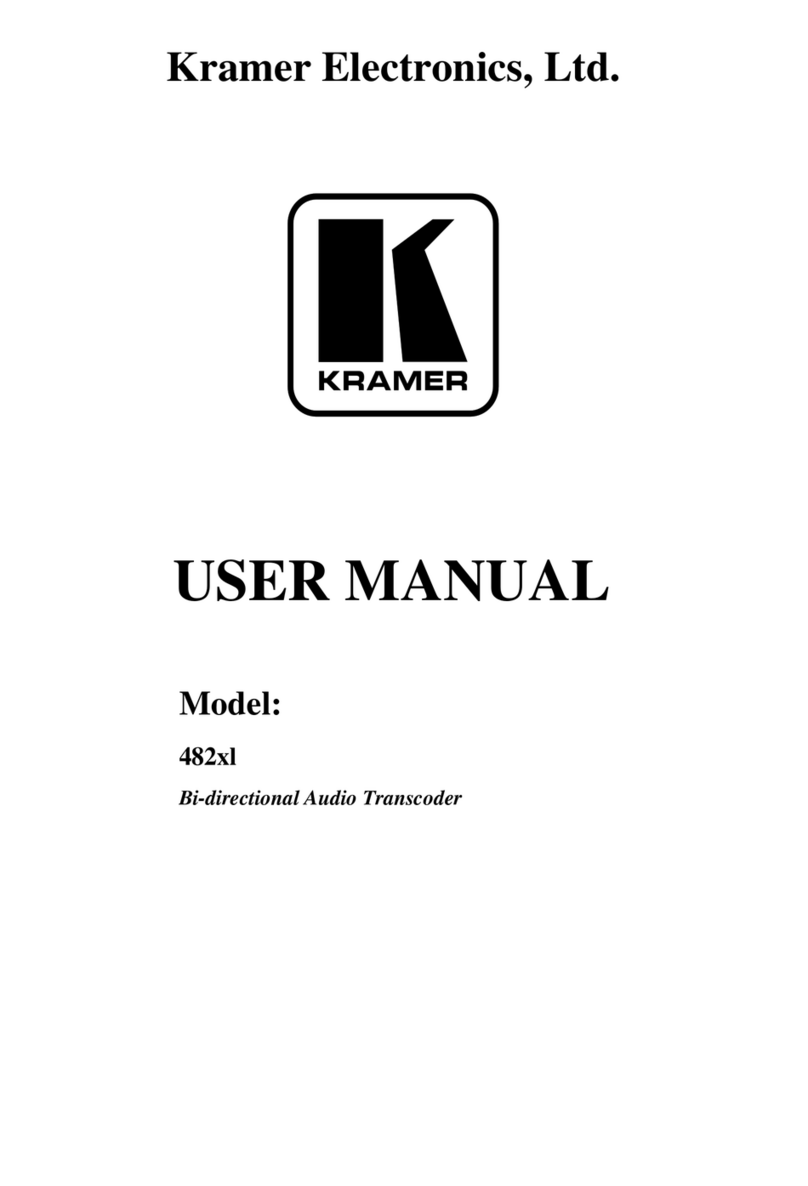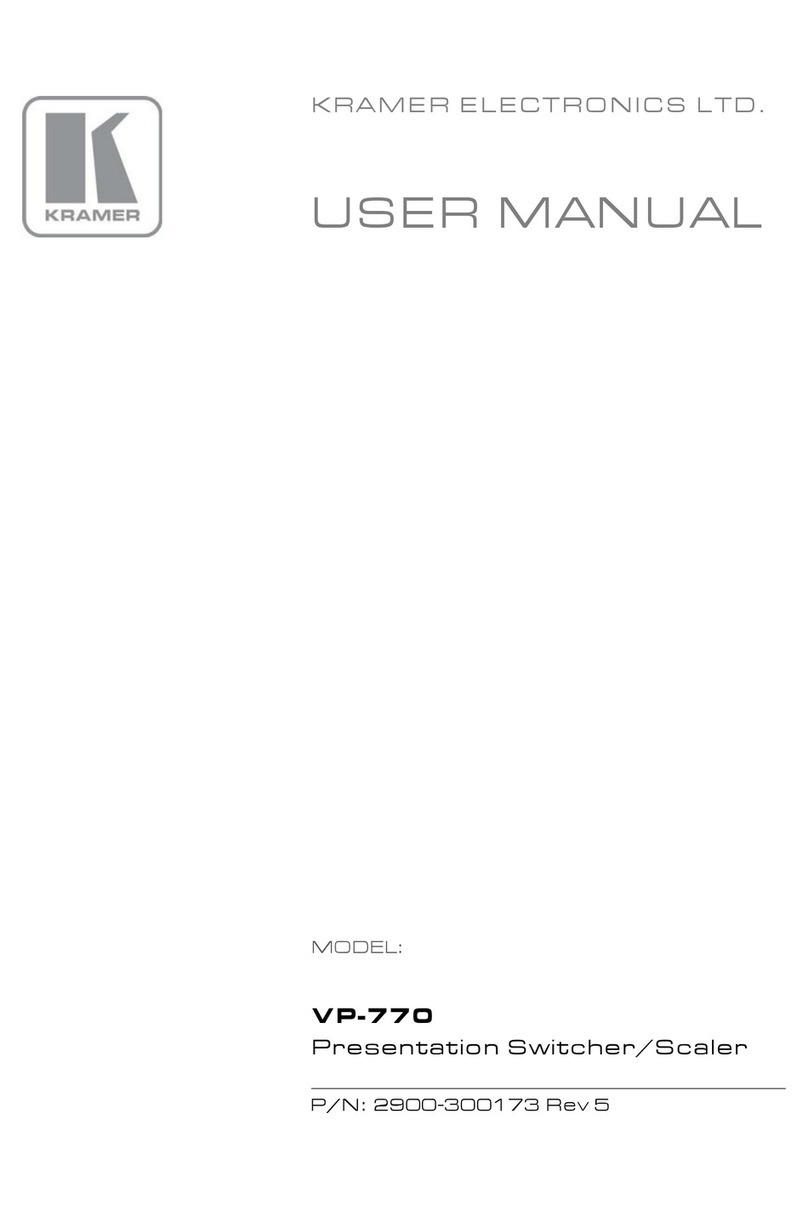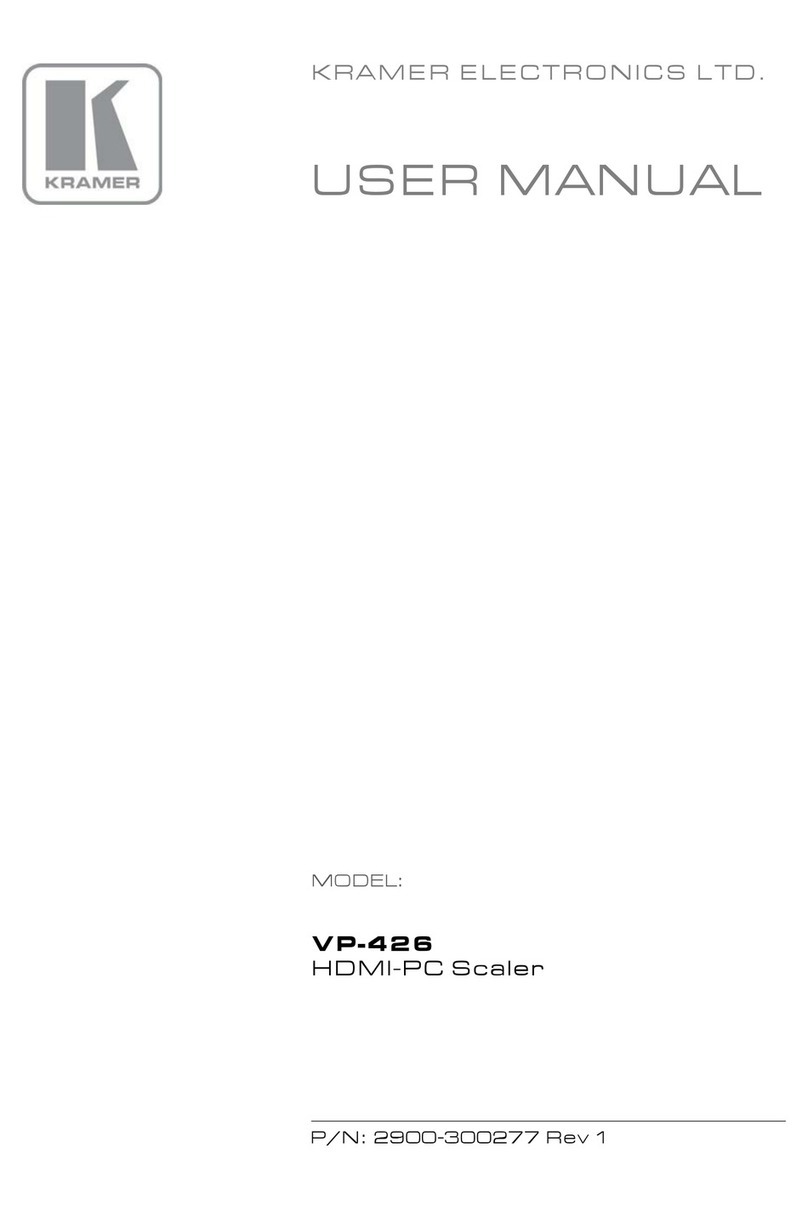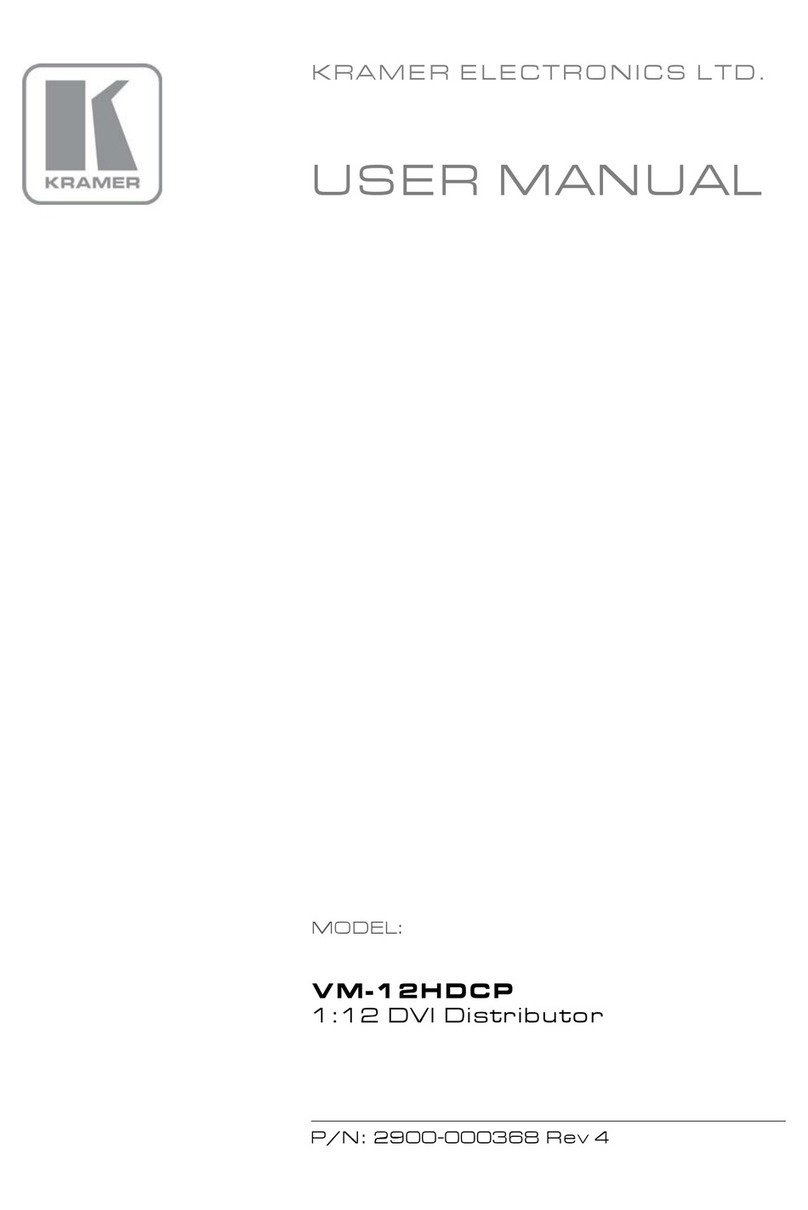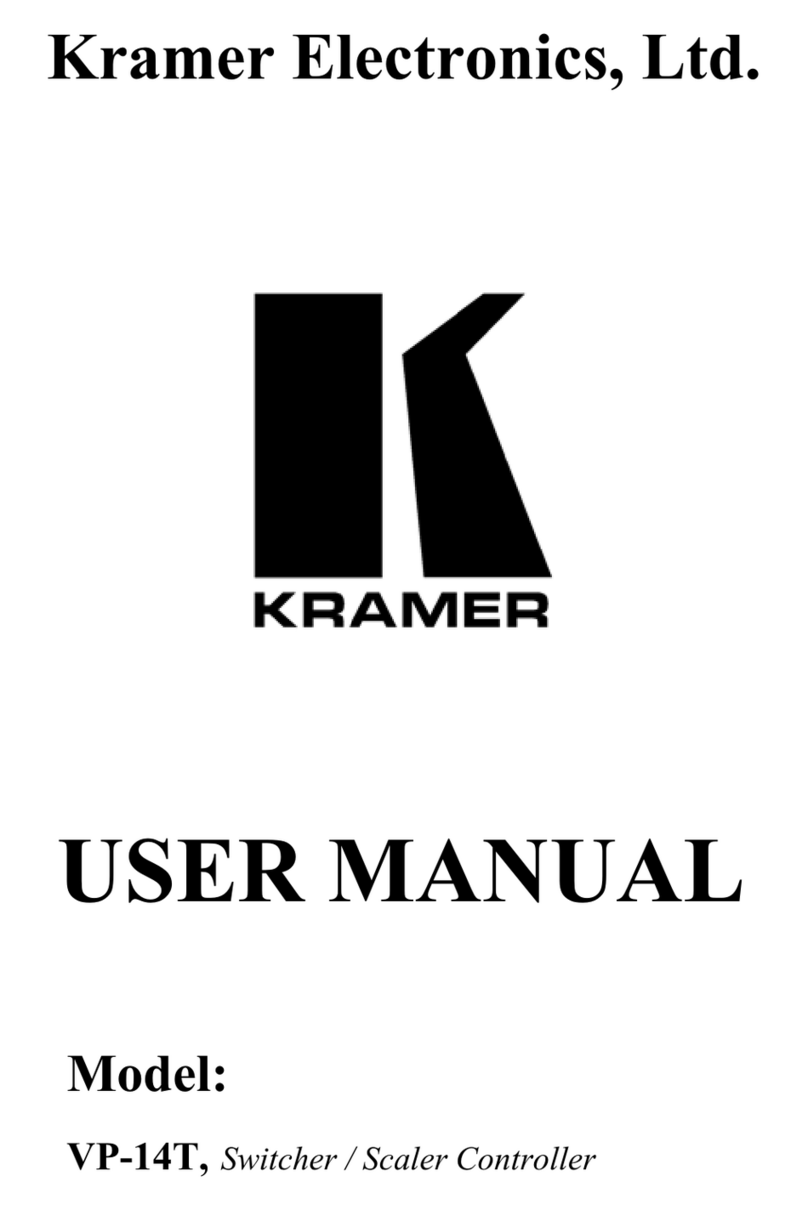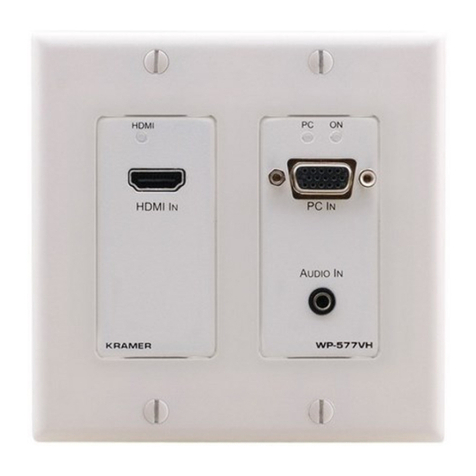Press to select source 1 and distribute this signal to the outputs
5 EDID Buttons2READ
3Press, after pressing the EDID SELECT button, to acquire the EDID
Press to show the EDID status
6 SELECT Select the EDID mode (One Output, Default or Auto-mix)
7 OUTPUT STATUS LEDs
(from 1 to 4) LEDs light when an output(s) is connected and active;
LEDs flash to indicate the type of EDID acquired (see Section 6.3) or
when connecting a non-HDCP display while providing HDCP
content to the VM-24HDCP
8 INPUT 1 DVI Connector Connects to the DVI source 1
9 INPUT 2 DVI Connector Connects to the DVI source 2
10 OUTPUT DVI ConnectorsConnects to the DVI acceptor (from 1 to 4)
11 RS-232 9-pin D-sub Port Connects to the PC or the Remote Controller4
12
REMOTE IR5Connects to an external IR receiver unit for controlling the machine
via an IR remote controller instead of using the front panel IR
receiver
64.1(See Section )
13 Power Connector with Fuse AC connector enabling power supply to the unit
14 POWER Switch Illuminated switch for turning the unit ON or OFF
4.1 Using the IR Transmitter
You can use the RC-IR3 IR transmitter to control the machine via the built-
in IR receiver on the front panel or, instead, via an optional external IR
receiver7. The external IR receiver can be located 15 meters away from the
machine. This distance can be extended to up to 60 meters when used with
three extension cables8
Before using the external IR receiver, be sure to arrange for your Kramer
dealer to insert the internal IR connection cable15F
9with the 3.5mm connector
that fits into the REMOTE IR opening on the rear panel. Connect the
external IR receiver to the REMOTE IR 3.5mm connector.
1 Illuminates when selected and there is a signal; blinks when selected but there is no signal
2 See Section 6.3
3 Illuminates when configuring the EDID
4 Via a null-modem connection
5 Covered by a cap. The 3.5mm connector at the end of the internal IR connection cable fits through this opening
6 Optional. Can be used instead of the front panel (built-in) IR receiver to remotely control the machine (only if the internal
IR connection cable has been installed)
7 Model: C-A35M/IRR-50
8 Model: C-A35M/A35F-50
9 P/N: 505-70434010-S
